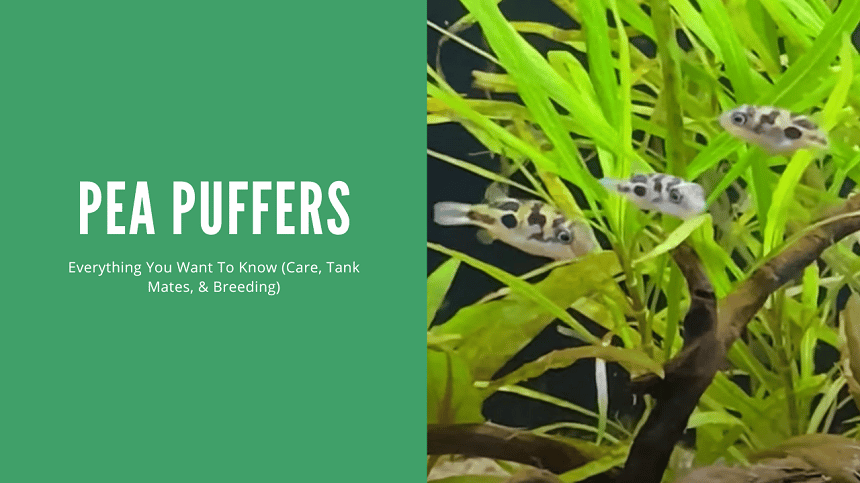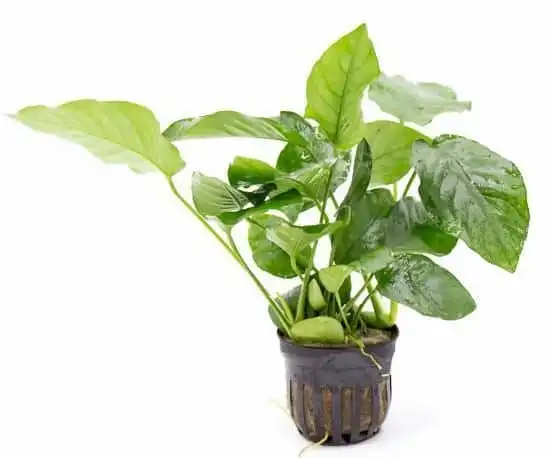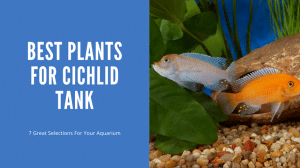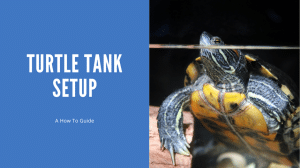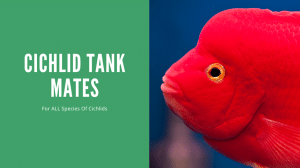Thank you for visiting! By the way… any links on this page that lead to products on Amazon and other stores/partners are affiliate links Aquarium Store Depot earns a commission if you make a purchase.
The pea puffer fish is a small, but notorious, freshwater fish that is often kept in home aquariums. Puffers are known for their playful personalities and their ability to blow themselves up like a balloon. While they may be small, pea puffer care can be tricky – especially when it comes to tank mates, proper water temperature, and pH levels. In this guide, we will teach you everything you need to know about keeping a pea puffer fish happy and healthy in your home aquarium. Let’s get started!
Species Overview
| Scientific Name | Carinotetraodon travancoricus |
| Common Names | Pea pufferfish, dwarf pufferfish, Malabar pufferfish, pygmy pufferfish, Indian dwarf pufferfish, bumblebee pufferfish |
| Family | Tetraodontidae |
| Origin | India |
| Diet | Carnivore |
| Care Level | Moderate |
| Activity | Moderate |
| Life Expectancy | 3-5 years |
| Temperament | Aggressive |
| Tank Level | Top, middle, and bottom |
| Minimum Tank Size | 10 gallons |
| Temperature Range | 72° – 82° F |
| Water Hardness | 5-15 dKH |
| pH Range | 6.5 – 8.0 |
| Filtration/Water Flow | Slow |
| Water Type | Freshwater |
| Breeding | Egg layer |
| Difficulty to Breed | Challenging in captivity |
| Compatibility | Species-only tanks, some community tanks |
| OK, for Planted Tanks? | Yes |
Origin and Habitat
Pea puffers are a type of freshwater pufferfish, one of about 30 different fish species to exist in the world. They originate from very specific locations throughout the state of Kerala in India. There, these fish are found in highly vegetated and slow-moving freshwater streams and rivers.
Due to their size, they are unable to navigate waterways with higher water currents and take safety in numbers and natural shade. Though highly territorial, dwarf pea puffers can usually be found in groups, investigating their surroundings and defending their homes.
Unfortunately, their limited natural habitat is threatened due to pollution and deforestation. On top of dwindling numbers partly caused by aquarium trade collection, the pea puffer has been listed as a vulnerable species according to the IUCN Red List of Threatened Species as of 20101.
Luckily, pea puffers have been successfully bred at the commercial level, leading to more sustainable methods of distribution. Still, some wild-caught specimens make their way into the market.
Appearance
There is arguably no other fish as cute as the pea puffer. These fish are lucky to reach 1 inch at mature size. They have a pointed head and tail with a plump belly that looks like they really might have swallowed a whole pea!

Pea puffers are yellowish-green in color with a lighter belly. They have several brownish-black spots with many pinpoint speckles as well. One of the most adorable features of these dwarf pufferfish is their two large eyes that stare at anything and everything with wild fascination and joy.
It is impossible to tell a male pea puffer apart from a female while they are juveniles. As we’ll see, this can lead to some aggressive behavior in the future.
In general, male pea puffers are much darker and more intense in color; their stomachs will be yellower and their spots will be more pronounced. Most notably, males will have a black stripe that runs along the top of their belly and iridescent swirls in their eyes. In contrast, a female pea puffer will lack both the stripe and iridescence but will be larger and much plumper overall.
Will They Bite You?
Though there is a big size difference between some of the largest species and the pea puffer, this behavior stays the same. Pea puffers will not hesitate to try to bite a hand that enters the aquarium. That being said, it’s unlikely that your small fish will cause you any serious injury. Still, immediately disinfect the area to prevent infection.
A bigger difference between males and females is their level of aggression. Despite their size, pea puffers can be especially territorial and aggressive. Males are considerably more aggressive than females, but will these fish bite you if you put your hand in the tank?
Pufferfish are inquisitive and eager fish. Fish hobbyists love both freshwater and marine species of pufferfish due to their bold and curious personalities. Many times, pufferfish keepers are greeted by their fish chomping away at the surface of the water when it’s time to eat; tongs often become the most preferred way of feeding these fish.
On the other hand, some puffers allow their owners to pet them! We do not recommend this as this can potentially injure or disrupt the natural slime coat of the fish.
Are They Poisonous?
Not only do you have to worry about your fish biting you, but you should be aware that some wild-caught pufferfish can initially contain toxins, namely tetrodotoxin in marine species and saxitoxin in freshwater species. In general, though, dwarf pea puffers found in the aquarium hobby are not poisonous and are not a danger to their owners.
Like many other animals, pufferfish become toxic due to their diet. In particular, pufferfish need to consume specific bacteria and algae that grow on the shells of mollusks in order to produce a toxin. These poisons accumulate in the organs of these fish, which then poison and potentially kill whatever larger predator comes along and eats the puffer.
Even in the wild, it is rare to find a pea puffer that has toxins present in its organs. Needless to say, the majority of pea puffers available in the aquarium hobby are not toxic and are harmless. This should not be tested by humans or other fish that can eat your puffers, though!
Care Guide
Pea puffers are some of the smallest fish available in the aquarium hobby. They don’t need a lot of space, but oftentimes bring more excitement than the largest aquarium setups!
On top of that, a dwarf pea puffer aquarium is easy to assemble and maintenance is relatively straightforward. However, their aggression, dietary needs, and tank mate limitations prevent this predatory species from being one of the most popular fish in the hobby.
Are They Hard to Keep?
Pea puffers aren’t beginner fish and require some moderate fish care. It takes some planning to get a correct male-to-female ratio, which is needed to keep aggression levels down. They also need to be fed a mainly carnivorous diet with a variety of live, frozen, and freeze-dried foods.
Although pea puffers are nearly irresistible, they require some special care that not all hobbyists are ready to give. Pea puffer owners need to be ready to respond to potential aggressive behavior while catering to a carnivorous diet in a species-only aquarium.
At the same time, pea puffers are one of the best introductory species of pufferfish to keep. They are small fish that can be kept in small tanks whereas most other pufferfish can only be kept by themselves in very large systems. Financially, they are also one of the cheapest species of pufferfish to keep with individuals ranging from $3-15.
On top of that, pea puffers have very slow-growing teeth that do not need to be manually trimmed like other species with larger and faster-growing teeth. As long as hard foods are fed every now and then, you will never need to take care of your pea puffer’s teeth.
Aquarium Setup
Pea puffers are considered a nano fish species. However, a nano tank setup will only work if the layout caters to their aggressive behavior. This is why the minimum tank size for a pea puffer can vary depending on the number of aquarium plants and structures provided.
Tank Size
Being a nano fish, a pea puffer will gladly live in aquariums under 20 gallons. In fact, a single pea puffer can comfortably be kept in a 5 gallon tank as long as there are enough hiding spots and water quality is maintained. The best size for a pea puffer tank is 10 gallons. This allows at least 2 to 3 puffers with plenty of room for your fish to explore.
Even though 10 gallons might seem small, it can seem like a lot of wasted space when these fish are only an inch big. It can be very tempting to add other fish or more pea puffers. However small, pea puffers need space to claim territory and exercise and the tank should not be overstocked.
Water Parameters
Pea puffers aren’t the hardiest fish, but they don’t demand super-specific water parameters either; like other fish, poor water quality will affect pea puffers over time.
In all regards, pea puffers prefer neutral water parameters. This means 0 ppm ammonia, 0 ppm nitrite, and minimal nitrates. Water temperature must remain between 72° – 82° F; anything above or below this range will cause your fish to stress out. Water pH should also remain near neutral, between 6.5 and 8.0.
Though these fish might seem like they’re scaleless, they actually have scales that have a skin-like texture. This makes them a little hardier than other sensitive fish, though water quality still needs to be maintained through weekly or biweekly water changes.
Filtration and Aeration
Pea puffers do not tolerate water flow well. These fish come from waters that are near standstill conditions and cannot swim against a moderate current produced by a filter or other aeration equipment.
That being said, a pea puffer setup needs good filtration as these fish are messy eaters. Most equipment will need to be baffled to keep water flow to a minimum; some intake valves may also need to be covered to prevent these little fish from being sucked up.
Water with little flow will suffer from low gas exchange. This can cause some concern in regards to dissolved oxygen levels. An air stone with an adjustable rate may be added, though live plants are the preferred method for naturally introducing oxygen into the water column.
Plants & Lighting
Pea pufferfish prefer dim lighting. This becomes a problem though as they also prefer heavily planted aquariums that depend on higher lighting intensities. There are a few ways to combat this balance between preferred dim lighting and the lighting required to keep aquarium plants growing.
The best way to get a balance between high and low lighting is by creating dynamics in the tank: some areas with very intense lighting and other shaded areas where your fish can seek refuge. This can be done by using floating plants, like duckweed (Lemna minor) or water lettuce (Pistia stratiotes).
Populations of floating plants will need to be controlled as they can quickly block out all available light. Dispersion can also be controlled by using floating sectioning tools specifically designed to keep floating plants exactly where you want them.
Another option is to create different sections of the tank based on plant density and species. Simply plant taller plants in one area and shorter plants in another. This can create a background, midground, and foreground effect with plants depending on different light intensities.
Another option is to go completely low-tech and only plant undemanding species. This will still provide your fish with dimmed lighting and a heavily planted aquascape. Some ideal choices would be Anubias spp., Cryptocoryne spp., hornwort (Ceratophylum demersum), and moneywort (Bocapa monnieri).
In addition to plants, driftwood, rocks, and other artificial decorations may be used to add additional dimmed hiding spots throughout the tank.
If you notice that your fish is hiding in the shaded areas of your tank, then the lighting might be too intense. Try lowering the intensity of the light, adding more live plants, or adding more hiding spots.
Substrate
Again, the substrate should benefit the plants in the aquarium. Unlike other pufferfish, you do not need to worry about your pea puffer rearranging the plants and decorations in your aquarium. This allows for both gravel and sand substrate options.
In general, pea puffers look best on a fine sand substrate, though coarse sand or gravel will facilitate plant growth better. A layer of leaf litter may be added to make the tank look more natural.
Tank Maintenance
Pea puffer tank maintenance is straightforward. Perform 25% weekly or biweekly water changes depending on water quality. Keep the substrate vacuumed as minimal water flow can lead to detritus and waste build-up.
Because these fish prefer densely planted aquariums, many hobbyists choose to dose fertilizers. The frequency and amounts of fertilizer will depend on each individual system. For the most control and cost-efficient method, use dry fertilizer powders. Liquid fertilizers are the most convenient
Tank Mates
Unfortunately, pea puffers do best when kept as the only species in the aquarium. Though small, these freshwater fish can be aggressive towards each other and other tank mates. As it is, some fishkeepers already have problems diffusing aggression between male puffers.
The trick to getting a peaceful pea puffer tank is having a good balance of males and females; there should be at least 2 to 3 females for every male pea puffer. This will keep the male from harassing the females too much.
Community Tank Mates
Pea puffer tank mates are limited, though there are some options that have proven to be successful. Of course, the best tank mates will be other pea puffers but there are some fish that stay out of the way of the pea puffer.
These include:
Tank mates should be fast and protected in a group. It is especially important to pick fish that swim at other levels of the water column, like the top and bottom, where your pea puffers don’t regularly stay.
Food and Diet
It’s no secret that pufferfish are some of the most fun fish to feed in all of the aquarium hobby. These adorable fish will gladly munch down on anything you give them, though they need a carnivorous diet to thrive. This can become costly over time and not all hobbyists are able to meet the dietary needs that come along with pea puffer care.
As mentioned before, pea puffers have slow-growing teeth. This means that they don’t heavily rely on hard foods to trim their teeth like other species. Instead, they can be kept on a live, frozen foods, and freeze-dried diet.
Pea puffers will enjoy an assortment of meaty foods, including brine shrimp, worms, and mollusks. They can be given fresh seafood and will enjoy eating pest snails, like ramshorn snails, from another tank. Pea pufferfish will not accept dry foods, like freshwater fish food flakes or pellets, making them slightly more challenging and expensive to keep.
Breeding
Pea puffers are not easy fish to breed, though they are now bred successfully at the commercial level. It is easy to make these small fish happy, but difficult to make them spawn.
The key to breeding these tiny fish is providing them with algae or moss. In the wild, these fish naturally spawn in mats of algae and moss, which can be recreated with some Java moss ( Vesicularia dubyana) in the aquarium setting.
Keep a group of females with a couple of males. Keep them well-fed while maintaining water quality. A dedicated breeding tank isn’t necessary as chances increase when more females are available. If successful, a clutch of eggs will be laid and fertilized in the given moss.
The eggs will hatch within a couple of weeks. Raising the fry is difficult as they need to be given incredibly small foods, like paramecia and infusoria. For the best results, they should be moved to their own separate tank that is free of predators and powerful aquarium equipment. Once they are large enough to accept larger, meatier foods, their chances of survival increase significantly.
At the same time, some hobbyists have had their pea puffers spawn without any intervention other than being given a suitable substrate. Each clutch can raise anywhere from 1 to 40 pea puffers.
Final Thoughts
Pea puffers are adorable fish that don’t need a lot of space. However, they can be pretty aggressive and need to be given a specific diet that not all hobbyists can provide. If tank conditions are met, then they could potentially spawn on their own in the aquarium.
For the most part, these freshwater fish make for a great species-only aquarium, though some hobbyists have made other tropical fish work as tank mates as well!
- About the Author
- Latest Posts
I’m thrilled that you found Aquarium Store Depot! Here you’ll find information on fish, aquariums, and all things aquatics related. I’m a hobbyist (being doing this since I was 11) and here to help other hobbyists thrive with their aquariums! I adhere to a high quality Editorial Process and Review products with real life field usage and practical analysis.

